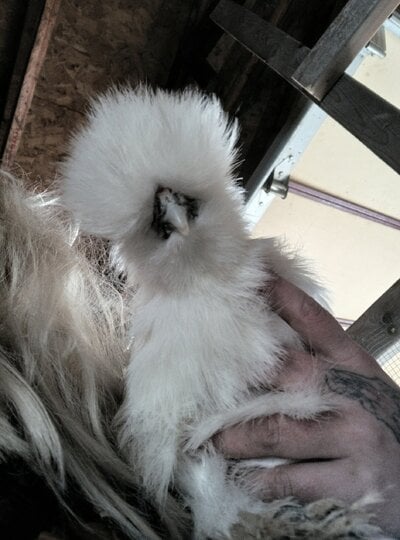EnnieM0097
In the Brooder
- Jan 29, 2023
- 13
- 8
- 16
I'm turning most of my focus to breeding silkies. while I have researched, and further will, I'm looking for your personal experience and opinions. this site has helped me shape my entire program so far! (photo of my Delores, because she's sweet.)
the genetics of satins and frizzles.
1. what % will turn out with each feather type? when bred to smoothes, showgirls, and/or eachother?
2. can chicks be silent carriers of either?
3. can a seemingly smooth chick turn out frizzled or satin (as I know it can work the other way around)?
4. frizzles shouldn't be bred with frizzles - can satins be bred with satins?
5. smooth roos and fancy girls, or fancy roo and smooth girls? (I do have a bachelor pad. roos will only ever be there, or with their trio/quad.)
6. and MOST importantly - those that breed any/all - DO THEY SELL? HOW WELL? is it worth breeding many, or am I better off breeding a few and sticking mostly with smooths? while we're at it... what are your best selling colors? (not looking to steal your projects!) while I like to think people want the "different" birds, maybe that's all in my head. thank you in advance - much love and appreciation!
the genetics of satins and frizzles.
1. what % will turn out with each feather type? when bred to smoothes, showgirls, and/or eachother?
2. can chicks be silent carriers of either?
3. can a seemingly smooth chick turn out frizzled or satin (as I know it can work the other way around)?
4. frizzles shouldn't be bred with frizzles - can satins be bred with satins?
5. smooth roos and fancy girls, or fancy roo and smooth girls? (I do have a bachelor pad. roos will only ever be there, or with their trio/quad.)
6. and MOST importantly - those that breed any/all - DO THEY SELL? HOW WELL? is it worth breeding many, or am I better off breeding a few and sticking mostly with smooths? while we're at it... what are your best selling colors? (not looking to steal your projects!) while I like to think people want the "different" birds, maybe that's all in my head. thank you in advance - much love and appreciation!



